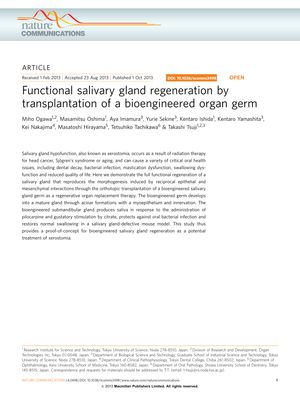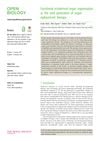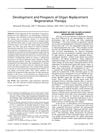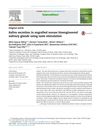Functional Salivary Gland Regeneration by Transplantation of a Bioengineered Organ Germ
October 2013
in “
Nature Communications
”

TLDR Scientists made working salivary glands in mice using bioengineered cells, which could help treat dry mouth.
In 2013, researchers successfully regenerated fully functional salivary glands in mice by transplanting bioengineered salivary gland germs composed of epithelial and mesenchymal cells. These glands developed properly, produced saliva in response to stimulation, and restored normal swallowing and oral health in mice with salivary gland defects. The study included 6 natural glands, 20 bioengineered submandibular glands, and 9 bioengineered sublingual glands for comparison. The findings suggest that bioengineered salivary gland regeneration could be a potential treatment for xerostomia. The study also highlighted the need for further research into adult tissue stem cells and clinical application methods for salivary gland replacement therapy in humans.




